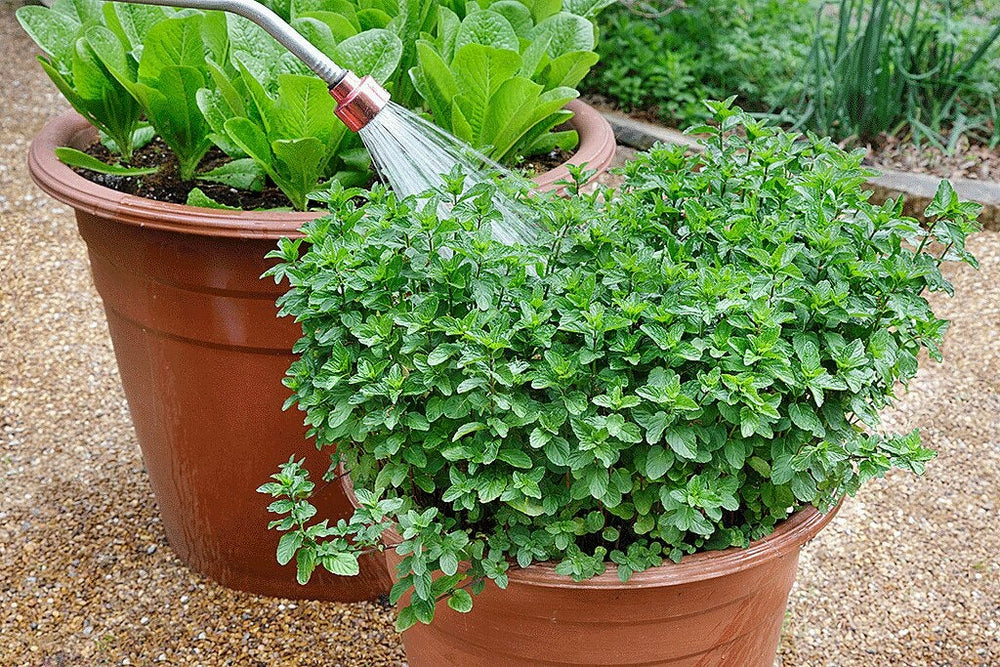Vegetables and herbs in pots need lots of water, but nature doesn't always provide enough at the right time — so sometimes it's up to us. In general, plants need the equivalent of 1 inch of rain each week to moisten the soil to the desired depth, but vegetables in containers usually need more because pots dry out more quickly. Vegetables, which are at least 90% water, will not do well if they don't get watered regularly. Herbs are generally more drought tolerant, but the big leafy ones like basil wilt fast.
The Tools You Need
Some folks like to water their plants every day with a watering can or hose. It is their end-of-day therapy. To hand-water container plants, such as those on your porch or deck, try a watering wand with a breaker nozzle. The wand allows you to reach pots with ease. The breaker nozzle turns a hard stream of water into a gentle cascade. It looks like a showerhead, but to the plant it feels like rain. Avoid wetting leaves because wet leaves, especially on tomatoes, are more likely to get diseases.
To conserve water, make use of what would otherwise go down the drain in the kitchen sink or shower by using buckets to collect the water, but avoid soapy water.
The best way to water is to use a drip system with a little emitter for each pot. Even better, hook it up to a timer to run for several hours and then turn itself off. Just be sure your faucet does not leak and that you have washers on all your hose connections. Otherwise, your water bill will be higher than necessary. A wide selection of timers is available at garden centers. Some are programmable.

Other Aids
- Mulching the top of the pot prevents evaporation from soil. Use fine bark, or in humid climates, consider white pebbles that dry out quickly.
- Water drains through quickly, so provide a saucer or other reservoir to catch the extra.
- Use a potting soil like Miracle-Gro® Moisture Control® Potting Mix that contains a wetting agent to be sure that the soil stays uniformly moist.
- Before planting, mix a water-retaining polymer, such as Miracle-Gro® Water Storing Crystals, into the soil (be sure to follow label directions). Doing this is like adding a moisture reservoir to the soil, since the polymer holds and releases water as needed by the plant.
- Avoid using clay pots in hot climates, as clay dries out quickly and absorbs heat more readily than many other materials.




 Herbs
Herbs
 Vegetables
Vegetables
 Fruit
Fruit
 Flowers
Flowers
 Succulents
Succulents


